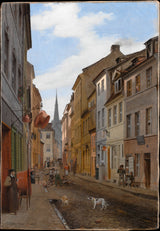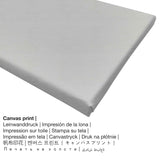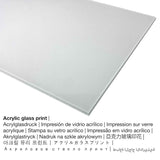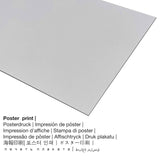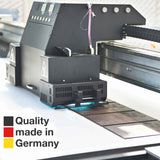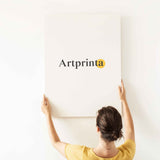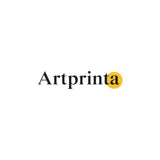Eduard Gaertner, 1831 - Parochialstrasse na Berlin - ọmarịcha nka
Ụtụ gụnyere. Mbupu gbakọrọ na ndenye ọpụpụ.
The 19th narị afọ e kere ọrụ nka Eduard Gaertner. Ihe gafere 180 afọ mbụ e mere ya na nha: 16 x 11 n'ime (40,6 x 27,9 cm). Mmanụ na kwaaji was used by the European painter as the medium of the artpiece. Today, the work of art forms part of the collection of Museumlọ ihe ngosi nka nke Obodo, which is located in New York City, New York, United States of America. With courtesy of The Metropolitan Museum of Art, New York, Catharine Lorillard Wolfe Collection, Wolfe Fund, and funds from various donors, by exchange, 2006 (ọha na eze). : Catharine Lorillard Wolfe Collection, Wolfe Fund, and funds from various donors, by exchange, 2006. Ọzọkwa, itinye n'usoro mmepụta dijitalụ na-abanye Eserese format ya na oke nke 1: 1.4, nke pụtara na ogologo bụ 29% mkpụmkpụ karịa obosara.
Nkọwa izizi sitere na Museumlọ ihe ngosi nka nke Art (© - Ụlọ ihe ngosi nka nke obodo ukwu - www.metmuseum.org)
Gaertner is best known for chronicling the rapidly modernizing Berlin cityscape. This relatively intimate view, culminating in the city's oldest church, the Nikolaikirche, illustrates earlier modes of urban life with evident affection. Two other versions of the composition are known: one is in the Nationalgalerie, Berlin; the other was destroyed during the Second World War.
Data nka ahaziri
| Aha eserese: | "Parochialstrasse in Berlin" |
| Nhazi nka: | sere |
| Otu sara mbara: | nkà nke oge a |
| Nhazi oge: | 19th narị afọ |
| Ekepụtara: | 1831 |
| Ogologo afọ nka nka: | karịa afọ 180 |
| Ọkara nke ihe osise izizi: | mmanụ na kwaaji |
| Akụkụ izizi: | 16 x 11 n'ime (40,6 x 27,9 cm) |
| Egosiputara na: | Museumlọ ihe ngosi nka nke Obodo |
| Ebe ebe ngosi nka: | New York City, New York, Njikota Obodo Amerika |
| Ebe nrụọrụ weebụ ihe ngosi nka: | Museumlọ ihe ngosi nka nke Obodo |
| Ụdị nka nka: | ngalaba ọha |
| Site n'aka: | The Metropolitan Museum of Art, New York, Catharine Lorillard Wolfe Collection, Wolfe Fund, and funds from various donors, by exchange, 2006 |
| Ebe E Si Nweta: | Catharine Lorillard Wolfe Collection, Wolfe Fund, and funds from various donors, by exchange, 2006 |
Ihe omuma ihe nka
| aha: | Eduard Gaertner |
| Aha ndi ozo: | Eduard Gaertner, Gaertner Eduard |
| okike onye nka: | nwoke |
| Nationality: | German |
| Ọrụ nke onye na-ese ihe: | artist |
| Country: | Germany |
| Nkewa onye nka: | omenkà nke oge a |
| Oge ndu: | 76 afọ |
| Afọ ọmụmụ: | 1801 |
| Afọ ọnwụ: | 1877 |
Kedu ihe ngwaahịa masịrị gị?
Anyị na-enye ihe dị iche iche dị iche iche na nha maka ngwaahịa ọ bụla. Họrọ n'ime nhọrọ ngwaahịa ndị a ugbu a ka ị kwekọọ na mmasị gị na nha na akụrụngwa:
- Mbipụta kwaaji: A printed canvas, not to be mistaken with a real artwork painted on a canvas, is an image applied directly on canvas. A canvas generates a lovely and pleasing appearance. A canvas of this artpiece will allow you to transform your art print into a large collection piece. Canvas Prints have the advantage of being low in weight, which means that it is easy to hang up your Canvas print without any wall-mounts. A canvas print is suitable for any type of wall.
- Aluminom dibond mbipụta (ọla): Aluminium Dibond prints are prints on metal with an outstanding effect of depth. The colors are luminous, the details are very clear.
- Bipụta na iko acrylic na-egbuke egbuke (nke nwere ezigbo mkpuchi iko n'elu): The acrylic glass print, which is sometimes described as a plexiglass print, will turn the original work of art into décor. With an acrylic glass fine art print contrasts plus smaller image details will be more exposed because of the very fine gradation.
- Mpempe akwụkwọ ederede (akwa akwa akwa): A poster print is a UV printed flat canvas paper with a slightly rough surface structure, which reminds the actual version of the artwork. Please note, that depending on the size of the canvas poster print we add a white margin between 2-6cm around the work of art, which facilitates the framing with a custom frame.
Banyere ihe a
| Nkewa edemede: | nka nka |
| Usoro mmeghari: | mmeputakwa n'ụdị dijitalụ |
| Usoro nhazi: | Mbipụta UV / dijitalụ |
| Mmalite nke ngwaahịa a: | Germany |
| Ụdị ngwaahịa: | na mmepụta ihe |
| Ihe eji eme atụmatụ: | ime ụlọ, nka mgbidi |
| Ndepụta: | usoro eserese |
| Oke akụkụ: | ogologo ruo obosara 1: 1.4 |
| Oke onyonyo pụtara: | ogologo bụ 29% mkpụmkpụ karịa obosara |
| Akụrụngwa ị nwere ike ịhọrọ: | akwụkwọ mmado (akwụkwọ kwaaji), mbipụta enyo acrylic (nwere ezigbo mkpuchi iko), mbipụta akwa akwa, mbipụta ọla (aluminium dibbond) |
| Mbipụta kanvas (akwa akwa na etiti ihe ndọtị): | 50x70cm - 20x28", 100x140cm - 39x55" |
| Acrylic glass print (nwere ezigbo mkpuchi iko) nhọrọ: | 50x70cm - 20x28", 100x140cm - 39x55" |
| Nhọrọ nha nke akwụkwọ mmado (akwụkwọ kwaaji): | 50x70cm - 20x28" |
| Nhọrọ Dibond (ihe alumnium) nhọrọ: | 50x70cm - 20x28", 100x140cm - 39x55" |
| Nhazi nke nka nka: | mbipụta nka na-enweghị isi |
Ihe dị mkpa: We try our best in order to depict the products with as many details as possible and to demonstrate them visually. Still, the colors of the print materials, as well as the print result might diverge to a certain extent from the representation on your monitor. Depending on your settings of your screen and the quality of the surface, colors may not be printed as realistically as the digital version on this website. Considering that the art prints are processed and printed manually, there might also be minor discrepancies in the exact position and the size of the motif.
© Nchekwa ikike nwebisiinka | Artprinta (www.artprinta.com)

